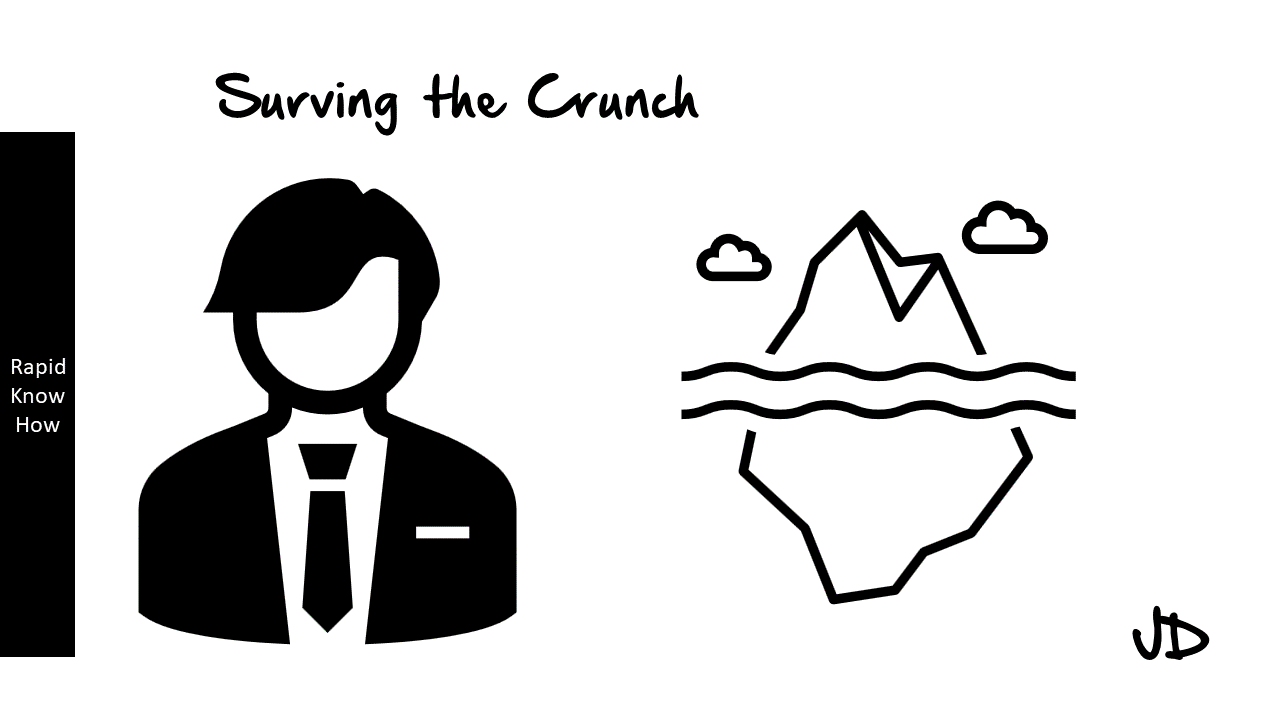Problem:
In today’s fast-paced world, the rapid know-how crunch is a real and pressing issue. The speed at which information is produced and disseminated is staggering, and it’s becoming increasingly difficult to keep up. This constant influx of new knowledge can be overwhelming, leading to a sense of inadequacy and stress. It’s not just about staying updated with the latest trends or technologies; it’s about understanding them, applying them, and leveraging them for personal or professional growth. The problem is further compounded when you’re required to apply this knowledge in real-world situations, where theory often meets its match in practice.
Impact:
The rapid know-how crunch isn’t just a problem; it’s a crisis. It’s a relentless race against time where the finish line keeps moving further away. Every day, new information is added to the already vast ocean of knowledge that you’re expected to navigate. And every day, you’re expected to apply this knowledge in real-world situations that are as diverse as they are complex. This isn’t just about keeping your head above water; it’s about swimming against the tide. It’s about surviving in an environment that’s constantly changing and evolving. It’s about being able to adapt and respond effectively to new challenges and opportunities.
Solution:
Surviving the rapid know-how crunch requires a strategic approach. It requires a commitment to continuous learning and development. But more importantly, it requires immersion – immersing yourself in real-world situations where you can apply your knowledge and skills.
Immersing yourself in real-world situations allows you to bridge the gap between theory and practice. It allows you to understand how concepts work in a practical context, how they interact with other concepts, and how they can be used to solve real-world problems or create real-world opportunities. This kind of immersion provides invaluable insights that can’t be gained from books or online courses alone.
But immersion isn’t just about exposure; it’s about engagement. It’s about actively participating in these situations, asking questions, seeking feedback, reflecting on your experiences, and learning from your mistakes. It’s about being open-minded and curious, willing to challenge your assumptions and push your boundaries.
Here are some strategies for immersing yourself in real-world situations:
1) Seek out opportunities for hands-on experience: Whether it’s an internship, a part-time job, a volunteer position, or a project-based assignment, look for opportunities where you can apply what you’ve learned in a practical context.
2) Network with professionals: Connect with people who are working in your field of interest. Attend industry events, join professional associations, participate in online forums or social media groups. These connections can provide valuable insights into current trends and challenges, as well as potential opportunities for hands-on experience.
3) Engage in experiential learning: Participate in simulations, case studies, role-plays or other activities that mimic real-world situations. These activities can help you understand how concepts work in practice and how they can be applied to solve real-world problems.
4) Reflect on your experiences: After each immersion experience, take some time to reflect on what you’ve learned. What worked? What didn’t? What would you do differently next time? This reflection process is crucial for learning and growth.
Surviving the rapid know-how crunch isn’t easy; but with immersion – with active engagement in real-world situations – it becomes not just possible but achievable. So dive in; immerse yourself; learn by doing; grow through experience.
